Facing the facade of the house with artificial stone
The so-called artificial stone belongs to the category of materials, which, thanks to the development of modern building technologies, are not inferior in their characteristics to the well-known natural product.

Materials of this class are widely used today in the finishing of private residential buildings and have the following indisputable advantages:
- Artificial stone blanks have a lower weight, which considerably simplifies all the procedures for their installation, and also ensures reliable adhesion of the finishing material with the base.
- They are more resistant to sudden temperature changes, which significantly increases the service life of artificial surfaces.
- Facing the facade of the house with artificial stone provides an opportunity to choose from a variety of color options, and also allows you to use various combinations of them.
- The artificial stone considerably surpasses the natural analogs in the cost and simplicity of service.
Preparing the surface of the walls for finishing
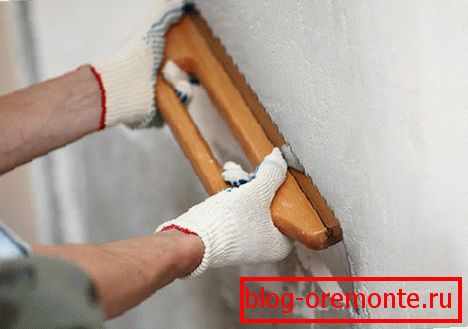
Artificial stone can finish the walls erected from a variety of materials, ranging from wood and profile panels and ending with concrete, foam blocks or bricks. At the same time, in most cases, thorough preparation of the surface for finishing is not necessary at all. So, when using blanks with a relief surface (imitation under sandstone, for example), the preparatory operations are reduced, as a rule, to the elimination of too obvious irregularities.
The need to prepare a completely flat base arises when working with artificial stones that have a smooth work surface (imitations for brick or river stone, for example). You can evaluate the condition of the surface to be trimmed using the normal building rule. In the event that the gaps between the rule and the plane of the wall do not exceed 4-5 millimeters - you can immediately proceed to the facing of the wall without prior alignment.
If there are visible gaps in the eye, the surface should be prepared for finishing using all known methods of leveling (plastering or cutting of the protrusions detected).
Selection and preparation of blanks
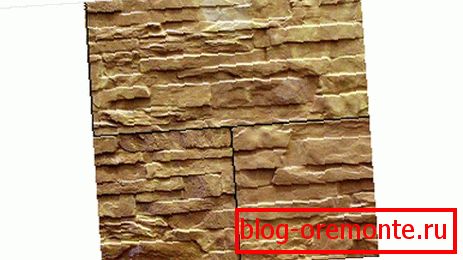
After preparation of the facade surfaces for finishing, it will be possible to proceed to the selection and molding of the stone blanks used for its facing. To do this, you have to do the following simple operations:
- First of all, you need to check all the stone prepared by you for marriage, and then store the selected blanks in a convenient place for work.
- During the inspection and storage of the finishing elements, it is desirable to select several pieces from each package. This will allow you to avoid the accumulation in one place of blanks that have the same color shade (i.e., mix them). As a result of this mixing, tiles with different shades will naturally spread over the surface of the facade. For the formation of a more natural finish pattern is recommended to alternate elements that differ in size, texture and thickness.
- At the final stage of material preparation, the working surfaces of the selected tiles are carefully cleaned with an iron brush.
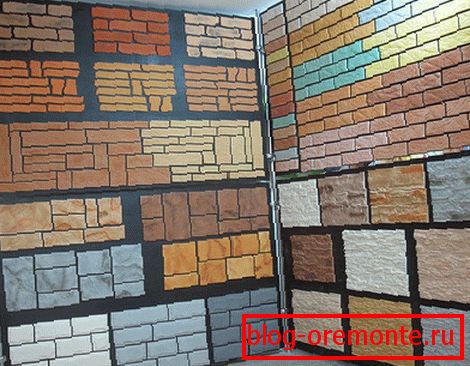
Note! If necessary, you can customize the facing stones in shape and size, breaking off or cutting off excess parts from them. For these operations, you will need pliers, a circular saw or a special grinding machine.
When calculating the number of prepared facing blanks should be based on the total area of the treated surface.
Styling conditions and technique
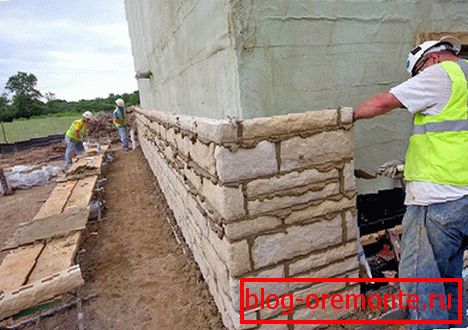
Note that the lining of the building's basement and its facades is made, as a rule, with the use of special cement or special glue, which is allowed to be used only at positive outside temperatures. Moreover, the optimum operating mode is considered to be the temperature range from +5 to + 25 ° C.

It should also be recalled that in the construction practice there are two methods of laying facing stone: with and without seams. When laying billets with jointing, you will need to control the width of the gap, the size of which depends on the shape and texture of the lining material used (see the photo of the facade facing below).
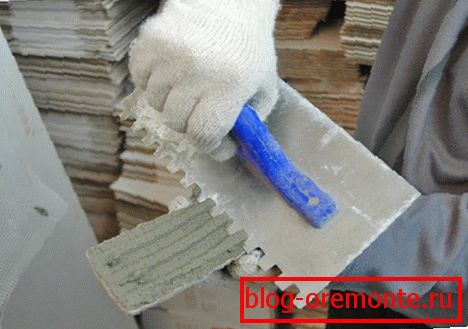
When working on the so-called "seamless method", the workpieces fit as closely as possible to one another (due to the selection of the appropriate stone shape). It is very important to ensure that the end joints of the stacked elements have a thin layer of solution.
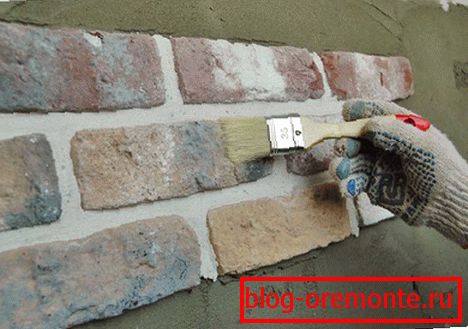
To do this, the adhesive composition is applied to the work surface with a small margin, which ensures the extrusion of its excess at the edges of the workpiece. Subsequently, these surpluses are removed with rags or pieces of soft cloth.
A photo
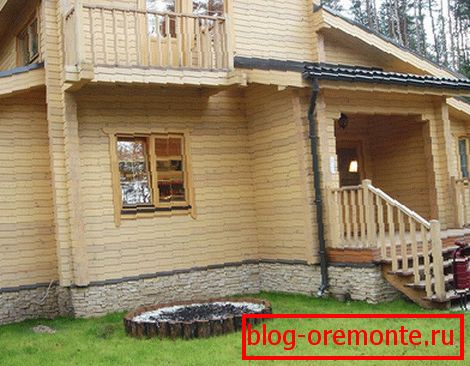
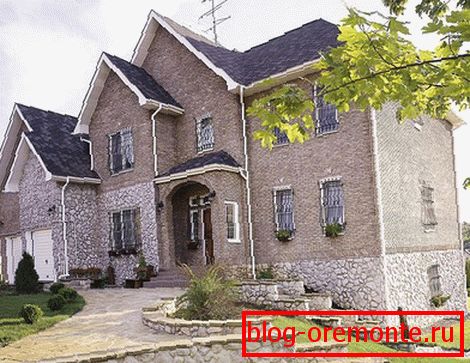

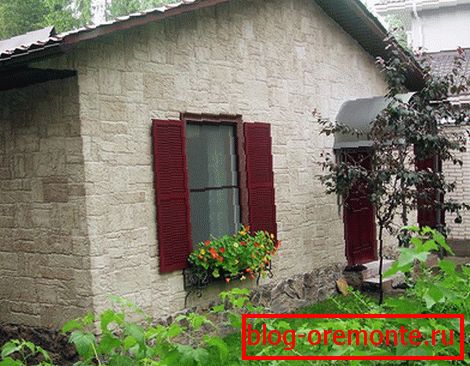

Video
We invite you to watch the video about the laying of artificial stone: